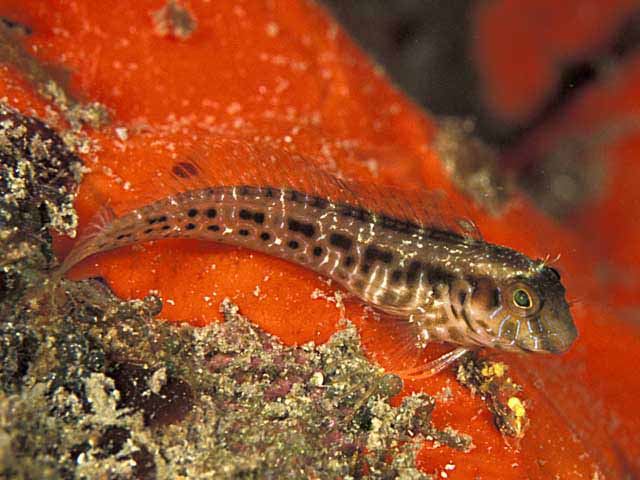| Blenniidae (Combtooth blennies), subfamily: Salariinae |
| 8.5 cm TL (male/unsexed) |
|
reef-associated; marine; depth range 0 - 10 m |
| Western Atlantic: New York (USA), Bermuda, the Bahamas, Gulf of Mexico to southern Brazil. |
|
Dorsal spines (total): 12-12; Dorsal soft rays (total): 18-18; Anal spines: 2-2; Anal soft rays: 19-20. No median row of cirri; supraorbital cirri branched (Ref. 26938). With numerous small brown spots; small black spot at front of dorsal fin; edge of anal fin pale (Ref. 13442). |
| Adults inhabit eroded basins and limestone boulders covered by an algal mat, sea fans, etc. (Ref. 5521). Sometimes around mangrove roots, young are sometimes found in floating Sargassum (Ref. 26938). Omnivorous, but feed mostly on algae (Ref. 13442). Oviparous. Eggs are demersal and adhesive (Ref. 205), and are attached to the substrate via a filamentous, adhesive pad or pedestal (Ref. 94114). Larvae are planktonic, often found in shallow, coastal waters (Ref. 94114). |
|
Least Concern (LC); Date assessed: 18 October 2007 Ref. (130435)
|
| harmless |
Source and more info: www.fishbase.org. For personal, classroom, and other internal use only. Not for publication.

